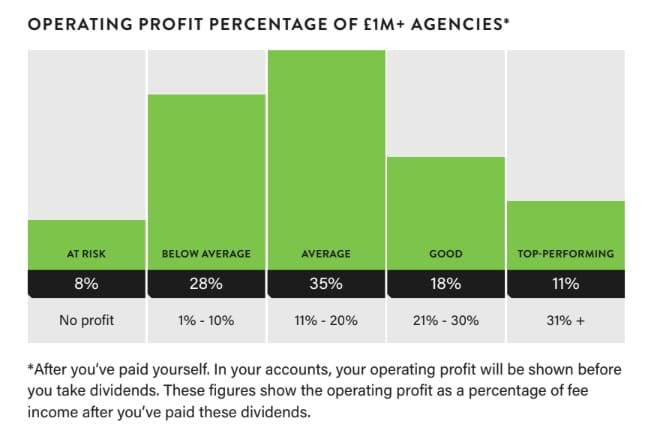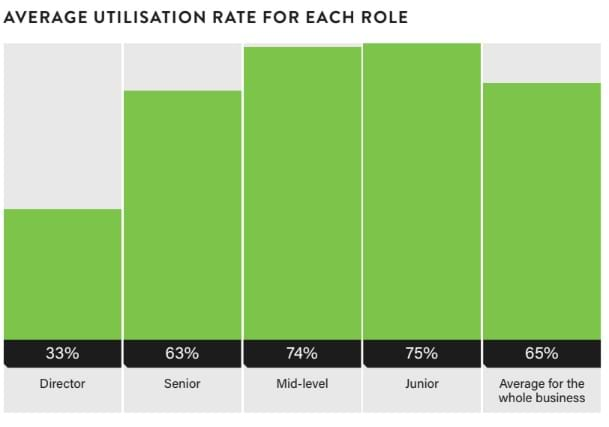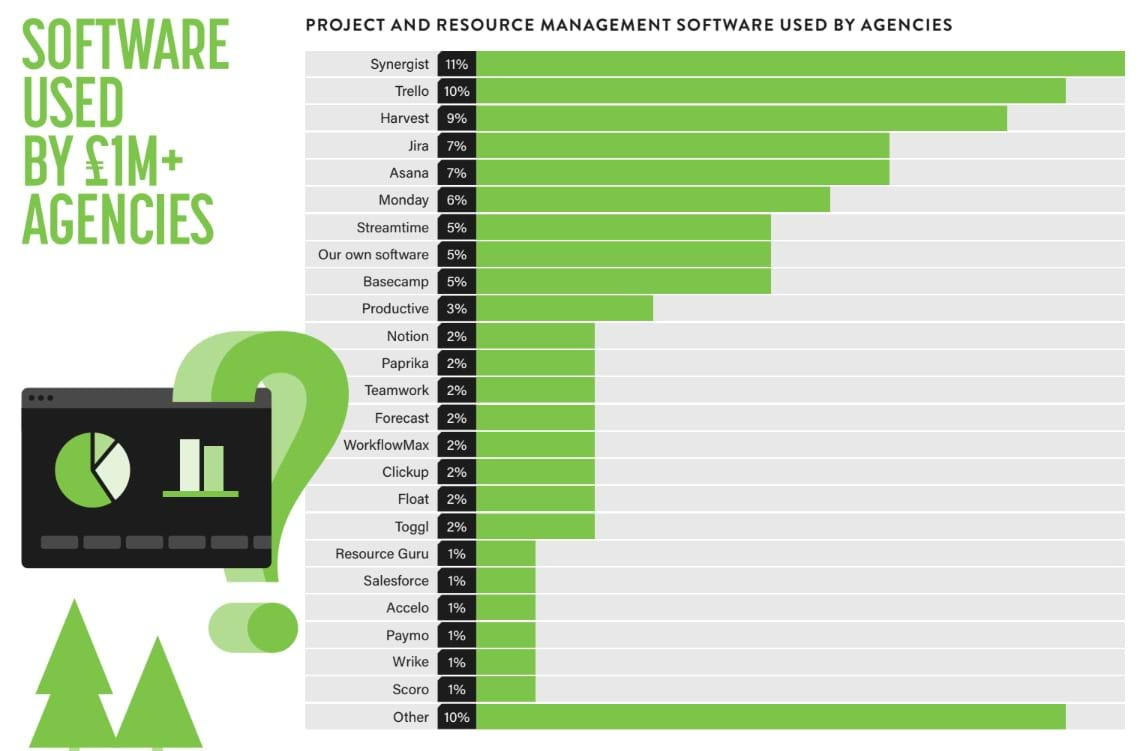6 things the most profitable agencies are doing... and how they could boost your growth
The latest agency benchmarking report – BenchPress Profit & Growth report 2023 – by the WOW company highlights the best practice lessons agencies with an income over £1m can learn from each other.
They explore how the top-performing agencies operate and reveal the facts and stats behind their success.
Here, we’ve pulled out the top six things you can do to run a profitable agency...
1. Work out what’s making money (and what’s not)
Details matter. And once you take a deep dive into your data, you could find yourself very surprised by what you uncover. The report established that 61% of agencies track their profit by project, 48% by client, 28% by service offering, 11% by individual team member and 19% by other means.

Those agencies which measure gross profit by project are likely to be the most profitable. It can be easy to fall into the trap of thinking big, long-term projects are the most profitable. But how much of that revenue actually translates into profit?
To calculate gross profit, first you need to track time and costs against your projects, clients, and services. Then, you can analyse your revenue by project/client/service vs. the cost to deliver the project/client/service.
Gross profit = revenue - direct expenses - cost to deliver
You can use spreadsheets to analyse data, or Synergist can do it automatically for you. Just go to the reporting suite and choose how you wish to view it.
Working out your most profitable areas can give you a big competitive edge. It might feel it goes against the grain to turn down work or ditch clients. But hanging on to unprofitable stuff just makes you busy... without making you successful.
2. Track projects in real time
There’s nothing inherently wrong with having a debrief after a project, gathering feedback and figuring out if there’s anything you could do better next time. But in terms of profitability, you might be throwing your money down the drain if you’re only measuring it retrospectively.
The most successful agencies track their projects in real time. This way, they can spot if things are starting to overrun and adjust timings or quotes to get things back on track.
If you’re halfway through the allotted hours on a project but nowhere near halfway through finishing, what are your options? Can you talk to the client about increasing your quote? Has the brief changed from its initial form? Was your estimate wildly off kilter?
Just ploughing on and mopping up the slack will lose you money – and you may as well not have taken on the job. Monitoring in real time will keep you within timings and budget.
To get high-level insight into profitability and projected overservicing in Synergist, just go to your jobs dashboard.
3. Achieve operating profit above 20%
According to the report, the top-performing agencies were reaching an operating profit of 31%+, while those in the ‘good’ category were achieving 21-30%. The average amount was 17%.
But don’t aim for average. Agencies often cite ‘if it wasn’t for that one job’ or ‘if only we hadn’t taken on that one client’ as reasons for not reaching their target profits. This is when they then start normalising single-figure operating profit.
Aiming for an operating profit above 20% (once you’ve paid yourself) will put you in a strong position, giving you a platform to invest in your future and invest in your growth strategy.

4. Track your utilisation
The familiar bane of creatives is completing their timesheets. However, it’s clear they're an integral part of agency operations. Because time is what you’re selling, so it stands to reason you need to understand what this is costing.
According to the report, average utilisation rates across the whole business were 65%. Rising to 75% for junior staff and dropping to 33% for director-level staff.

And the most successful agencies were those where the directors did less client work, seeing more profit and growth. Demonstrating the powerful impact of working on the business, rather than in the business, for better results. In fact, the biggest blocker to this type of success is directors spending time on client work.
Top tip: Review how every member of your team are spending their time. Look at the non-chargeable time - the internal meetings, business admin, building capability and working on your business – the four key areas in which time is spent – and make sure the right people are working on the right elements.
Read Agency utilisation rates: everything you need to know
5. Look to your tech
How does your agency manage its operations? The report stated that 11% use spreadsheets, 44% use separate apps and 44% use a single system. But spreadsheets don't scale well and as an agency grows they start to become unworkable, adding unnecessary complexity and risk.
Using a single system can help to streamline your processes, making it much easier to extract data. Plus, you’ll be able to see everything all in one place, from financials to timesheets, pipeline to projected profits.
Read Multiple software apps vs one integrated management system: which is best for your agency?
The stats speak for themselves in terms of how tech can support your agency’s success. Agencies that use spreadsheets for project management had an average utilisation rate for non-director roles of 66%. Those using software had an average rate of 75%. That’s a big difference. For a team of 10 chargeable staff at £100ph, that would be an extra £174k of profit per year!
Synergist is the most popular agency management software, used by 11% of £1m+ agencies.

6. Focus on planning for growth
Managed growth is the best way forward for agencies. Taking on lots of new work might seem like a good way to boost profits, but unless you’ve planned for it you can end up simply creating stress and chaos.
48% of agencies have a clear, written growth plan, which brings a host of benefits. Increased confidence is one, with these agency owners reporting a higher confidence rating than those with no written plan.
Faster growth is also an expected outcome, with a likely increase in fee income over 26% if you have a written plan. Plus, a plan means you’re twice as likely to have a healthy work-life balance. All good reasons to get writing...
Plan your growth strategies. The top three ways to pick up new clients were:
- Referrals from existing clients, so consider implementing a client referral scheme.
- Networking, so make sure you’re in the right groups.
- Referrals from freelancers and other agencies, so you could include a strategy to support this in your plan.
Your value proposition will also be a good way to boost growth. How will you add value to the specific group of clients you want to target? What is your niche specialism to help you stand out from the competition?
Agency life is fast paced and it can often be easy to get caught up in the whirl of day-to-day activities. But adding in some structure, strategy and planning will help your agency move from surviving to thriving, keeping workloads manageable, jobs on time and on budget, and profits where you want them to be... growing.